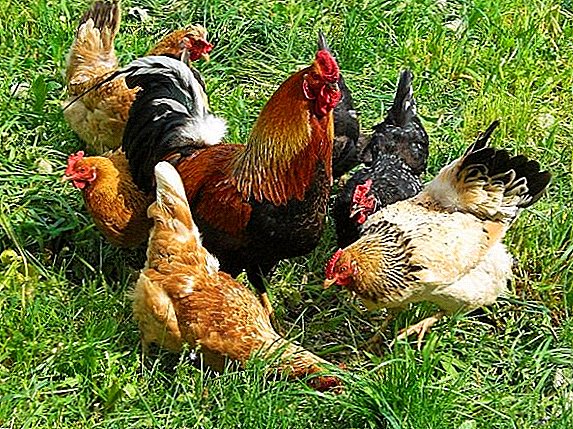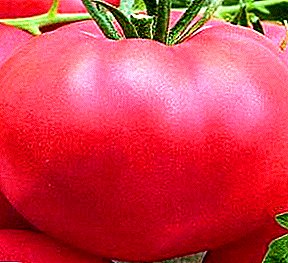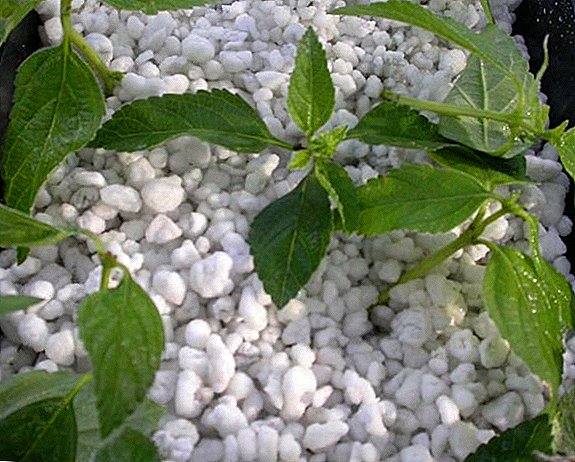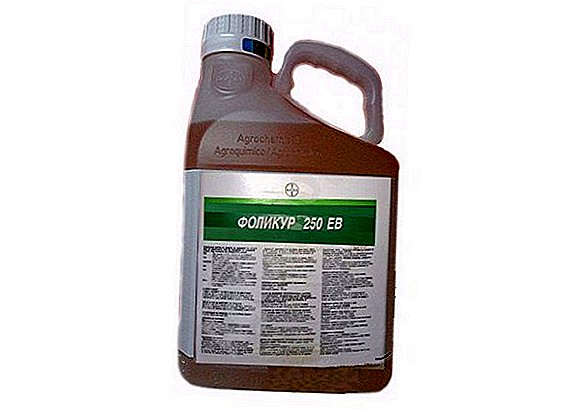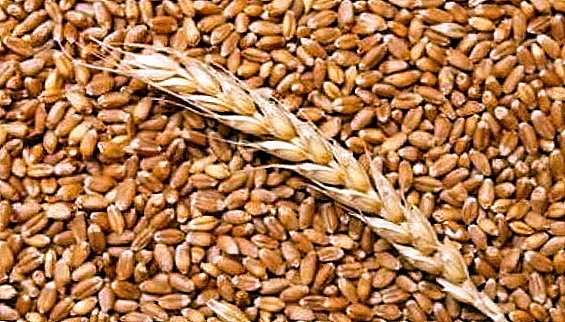 In the steppe regions, many farmers refuse to keep people demanding to feed and conditions of livestock, and bring sheep who can even graze in desert areas.
In the steppe regions, many farmers refuse to keep people demanding to feed and conditions of livestock, and bring sheep who can even graze in desert areas.
Next, learn about the specifics of feeding sheep in different seasons. Also consider the fattening of young animals and sheep at the mating.
What to feed the sheep at home: the basis of the diet
In order for an animal to fully develop and be healthy, its diet must include various types of high-quality feed.
Succulent feed
Succulent feeds are low-calorie, moisture-saturated parts of plants that are rich in fiber.
Grass
In the warm season, sheep need fresh grass. To do this, they are released for grazing, preferring the arid areas of the steppe, rather than wetlands or overmoistened meadows near water bodies. Sheep eat not only soft, juicy grass, but also various coarse thorns, as well as thin shoots of shrubs. When the grass turns yellow and fades, animals need to be additionally fed with greens of legumes or cereals.  It should be borne in mind that every day a sheep should eat at least 1 kg of grass per 100 kg body weightso that weight gain is observed.
It should be borne in mind that every day a sheep should eat at least 1 kg of grass per 100 kg body weightso that weight gain is observed.
Important! You can not graze hungry cattle early in the morning or after the rain in areas where there are legumes. If the animal eats wet grass on an empty stomach, then it will swell.
Silage
Silo is fermented leaves, stems and tops of plants.
Silo allows you to solve two problems at once: save on feed in the cold season, and offer the animal a succulent analogue of grass. For feeding silage sheep, corn tops are most often laid.
One individual consumes up to 4 kg of silage per day, therefore, in the presence of large livestock, fermented plants need to be prepared quite a lot.
Learn more about silage feed: silage harvesting and storage, best silage crops: maize, sorghum.
Root and Gourds
Root crops and melons saturate the body of the animal with vitamins, minerals, and fiber. In the cold season, the animal suffers from a lack of succulent feed, so these products will perfectly complement and balance the daily diet.  Are used root vegetables (mostly carrots and beets). You can feed both fresh vegetables and boiled vegetables. The second option is less acceptable, since due to the action of high temperatures occurs the destruction of many valuable chemical compounds. Up to 4 kg of root crops per individual should be given per day.
Are used root vegetables (mostly carrots and beets). You can feed both fresh vegetables and boiled vegetables. The second option is less acceptable, since due to the action of high temperatures occurs the destruction of many valuable chemical compounds. Up to 4 kg of root crops per individual should be given per day.
Read also about common varieties, planting and caring for fodder beet.
Of melon crops It is worth highlighting zucchini and pumpkin. Pumpkin is better preserved, and also has a large amount of vitamins in the composition, so it is preferable. Give the animals melon should be fresh, pre-milled.
Roughage
Rough feed is a dry grass that is rich in fiber and minerals, so you must be included in the daily diet of sheep.
Straw
Straw is the least valuable roughage, since it lacks vitamins, very little protein and minerals, and a lot of fiber. As a result, such food is digested only by 40-50%.  The most valuable straw:
The most valuable straw:
- pea;
- barley;
- oats;
- millet.
Wheat straw does not differ in utility, since it contains three times less protein than in pea.
Read also about the breeds of sheep: Kuibyshev, Gissar, Edilbaev, merino (breed, breeding), dorper, Romney-march, Texel, Katum.
Hay
Hay is the main feed in the cold season, so its quality and quantity must meet the needs of animals. One individual per day to eat up to 4 kg of hay.
Grass hay is considered the most valuable.that were mown during flowering. These herbs include alfalfa, clover, wild peas. The composition of these plants includes many necessary elements that help strengthen the immune system and improve metabolism. 
Senazh
Haylage is the green parts of valuable plants, which during drying lose no more than 50% of moisture. Their safety is ensured by canning in special sealed containers. Those grasses that are difficult or impossible to lay on silage (legumes and cereals) are allowed for haylage.
Haylage is used as a hay substitute or dietary supplement. In some cases, such food can be replaced by silage, but it is worth remembering that silage is a juicy food, and haylage is coarse.
Did you know? Sheep is very dependent on society, so a lonely animal quickly falls into a state of anxiety, which over time leads to the rejection of food.
Concentrated feed
Concentrated feed allows you to balance the calorie intake of the daily diet, as well as give the animals the necessary amount of protein. Due to the high cost of such food, it cannot be used as the basis of the diet, although it allows the sheep to get everything they need.  Core Concentrates:
Core Concentrates:
- cereals (barley, oats, wheat);
- legumes (peas, vetch, beans, lentils, lupine, chickpeas, espartit, etc.);
- sunflower cake;
- bran;
- corn (whole or crushed);
- specialized feed.
Important! For feeding sheep, it is better to purchase special feed peas or fodder beans.
Concentrated feeds are valued for a large percentage of protein, fat, various vitamins and minerals. One individual per day should be given up to 0.5 kg of concentrates.
Mineral Supplements
As mineral additives used salt, chalk and bone meal.
Salt helps to maintain water balance, therefore, one adult should be fed 10-15 g of mineral daily.  Chalk and bone meal are sources of calcium and phosphoric acid. These elements are necessary for the growth and development of the backbone of the sheep, so they are served in separate containers. All sheep must have access to minerals 24/7.
Chalk and bone meal are sources of calcium and phosphoric acid. These elements are necessary for the growth and development of the backbone of the sheep, so they are served in separate containers. All sheep must have access to minerals 24/7.
Water
In the warm season, when the sheep spend most of the day grazing, it is extremely important to take care of the watering. Animals are much worse tolerate the lack of water than food.
Important! It is impossible to water sheep from standing bodies of water. This may adversely affect their health.
In the cold season, when concentrated and coarse feeds prevail in the diet, sheep need to be given more liquid (it should not be cold). For every kilogram of dry matter should be up to 3 liters of water. Fluid temperature should not fall below + 8 ° C, otherwise the animals will catch a cold.
The average daily water requirement of an adult sheep is 4-5 l. 
The difference in feeding depending on the time of year
There is a certain order of use of feed. In the morning and evening, the sheep need to be given less nutritious food, and high-calorie feed should be fed during the day. Grass and other succulent fodder is given before watering, and concentrates and hay after. It is also important to correctly build a diet, depending on the time of year.
Check out the breeds of sheep dairy, meat and wool performance.
Spring
In spring each farm suffers from a lack of dry feed and concentrates, therefore it is important to transfer sheep to grass as early as possible. In this case, you must follow the rules, otherwise the entire population will have intestinal upset, which is extremely bad for the young.
To eliminate the unpleasant reaction from the gastrointestinal tract, it is necessary to give hay or haylage to sheep during rest. It is also necessary to increase the daily rate of concentrates to 500-700 grams. This will reduce the amount of grass consumption, so that in the first couple the sheep will gradually get accustomed to fresh juicy feed. 
Summer
There is no grass shortage in summer, so 85% of the daily ration should be fresh feed. At the same time, it is necessary for each animal to give about 200 g of concentrate per day to eliminate weight loss (the grass does not differ in calories). Also, while resting in a stall, sheep are given small amounts of hay (up to 1 kg per individual).
Check out pasture grazing guidelines.
As for water, it requires very little. While grazing, animals drink from natural water bodies, and while resting in a stall, it is enough to put several liters of water (on each individual) so that after eating hay the sheep do not suffer from thirst. 
Autumn
In early autumn, it is still possible to graze livestock, but the value of herbs decreases every day, so it is important to gradually add hay, vegetables to the diet, and also to increase the proportion of concentrated feed.
Every sheep per day give up to 3 kg of high-quality hay, and up to 4 kg of chopped vegetables. You can also include in the diet silo.
Winter
Fresh grass in the diet is completely replaced by coarse feed, vegetables and concentrates. Each adult individual needs to be given 4 kg of hay and silage per day, about 300 g of concentrates, and also up to 4 kg of root crops or melon. 
Important! Throughout the year, you need to give mineral supplements in the standard dosage. Lack of salt or calcium is not covered by the use of herbs or animal feed.
Standards and diet in a special period
Depending on the sex, age and condition of the animal, the diet can be modified. These features must be taken into account in order not to disturb the health of the animal and to provide its organism with everything necessary.
Ewes
By mating should be allowed queens, which have an average fatness. To do this, 6 weeks before mating, it is necessary to increase the daily caloric value by 0.2-0.3 fodder units (1 cu is equal to 1 kg of seed oats).
Ewe winter diet:
- roughage - 35-45%;
- juicy food - 35-45%;
- concentrated feed - 20-30%.
In winter, animals are fed with high-quality meadow hay, haylage, silage. Straw, concentrates, and vegetables are used as additional feed.  Approximate daily menu in the autumn-winter period:
Approximate daily menu in the autumn-winter period:
- 500-800 g of cereal hay;
- 2.5-3 kg of silage and root crops;
- 500 g of straw;
- 250-300 g of concentrated feed.
In summer, the animal fully satisfies its needs due to grass growing in the meadows. Only if the ewe is carrying several fruits or feeding the youngsters with milk, should the day menu be expanded with 300-400 g of concentrated feed.
Tips for novice sheep farmers: how to make a sheepfold on your own, shear sheep; criteria for selecting sheep clippers.
Ram maker
In order for the sheep-rams to be constantly in the right shape, they must consume daily feed of 1.8 feed units. During mating, the animal spends many times more energy, so the nutritional value of the food is still increasing (up to 2.3 ke.).
6 weeks before mating, the rams begin to feed hard, so that by the time of mating they are sufficiently well-fed and energetic.
Autumn-winter diet:
- roughage - 30-40%;
- succulent feed - 20-25%;
- concentrates - 40-45%.
Hay made of valuable herbs, grass meal, and haylage are suitable as roughage. Up to 3 kg of hay per individual must be given per day. If it is impossible to provide such volumes, then haylage and flour are used, as a last resort, small volumes of straw are used.  Since half of the daily ration is concentrated feed, they need to be given about 0.8-1.2 kg. This amount will be enough to provide the desired caloric intake.
Since half of the daily ration is concentrated feed, they need to be given about 0.8-1.2 kg. This amount will be enough to provide the desired caloric intake.
Silage and root crops are used as succulent fodder.
Diet during mating:
- cereal or bean hay - 2 kg;
- cereal dert - 800 g;
- meal - 250 g;
- feed carrots - 500 g;
- salt - 16 g
Read the description and use of soybean and sunflower meal.
During mating, skim milk (1 l) is added to the ration, as well as meat or fish meal (100 g per individual). It is important to calculate the calorie in advance. For this it is convenient to use the table of the main feeds by feed units.
Youngsters
The first 2-2.5 months of lambs feed the uterus, so their growth and development directly depends on the volume and quality of milk. If for some reason the sheep cannot feed the babies, then they are fed from the nipples, using cow's milk. Feeding is carried out 5 times a day in small doses.  After the second month of life, young animals lack minerals, so separate feeders with chalk, bone meal and salt should be separated, otherwise lambs will start to swallow mother's hair, which can cause serious problems with digestion.
After the second month of life, young animals lack minerals, so separate feeders with chalk, bone meal and salt should be separated, otherwise lambs will start to swallow mother's hair, which can cause serious problems with digestion.
Learn how to properly care for lambs after lambing and young without mother.
From 2 months it is necessary to gradually introduce concentrates into the diet. Begin with 50 g per day, using protein-rich foods. Hay of leguminous crops is also gradually introduced.
Daily diet at the age of 4-6 months:
- 300 g of special feed;
- 150 grams of oilcake;
- 0.5 kg of hay;
- 0.5 kg of vegetables;
- 4 g of salt.
Important! At the age of 5 months, the young should eat 2 times a day.
Daily diet of lambs aged 10-12 months:
- 500 g of cereal-bean hay;
- 1.5 kg of hay;
- 150 grams of barley drum;
- 50 g of meal;
- 9 g of salt.
 Separately, it should be said that dietary sulfur (1 g per day) is included in the diet of young animals, which allows you to avoid a deficiency of this substance in the body.
Separately, it should be said that dietary sulfur (1 g per day) is included in the diet of young animals, which allows you to avoid a deficiency of this substance in the body.
Fattening sheep for meat
Before slaughter, livestock diets are changed to maximize its weight. The total caloric content of the daily menu increases significantly, and motor activity decreases. This allows you to get a quick weight gain in the shortest possible time.
On this menu, sheep keep about 2-3 weeks:
- 0.7 kg quality hay;
- 5 kg of silage;
- 1 kg of vegetables or bahch;
- 450 g of concentrates (peas, barley, corn).
Note that the amount of fat should not increase significantly, otherwise you will get extra pounds of fat, not meat.
Did you know? Sheep are actively crossed with goats. The resulting mixture is characterized by increased attraction to the opposite sex, however, in most cases it is barren. Hybrids have an interesting wool, which is comparable in structure to the coat of the Caucasian Shepherd.
What can not feed the sheep
There are a number of products that need exclude from the diet of animals:
- It is forbidden to feed grass to sheep that grow in wetlands (reed, horsetail). You should also not give sour cereals (sedge, rush).
- You can not give sugar beets, as this root significantly raises the level of sugar, which leads to diabetes.
- All vegetables, fruits and melons must be cut into small pieces, as the sheep can choke.
- It is forbidden to give young people bread and other pastries.
Video: Sheep Feeding - Lecture
Sheep breeders reviews: animal feeding experience



Sheep are very unpretentious animals, which, if properly kept, allow the owner to receive a small income. In the process of keeping it is important not to save on feed and conditions, in order to get good wool and high-quality meat.


